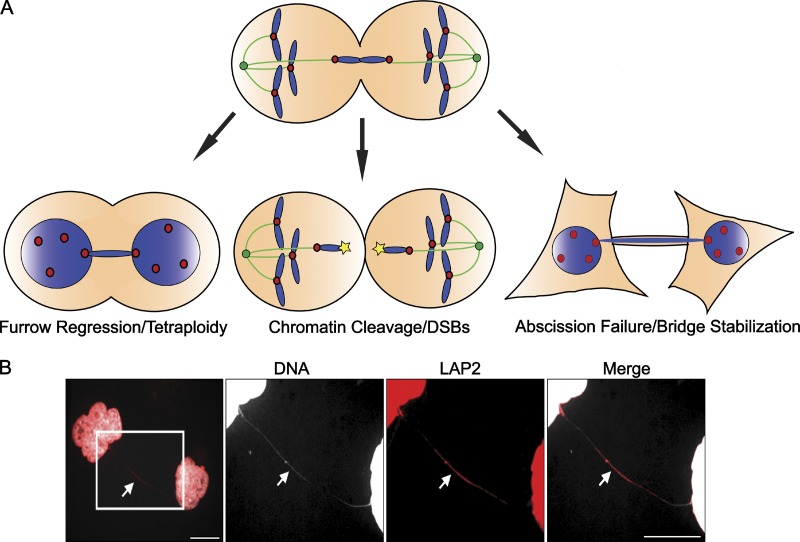Figure 3.
Consequences of chromosome bridges. (A) Chromosome bridges can promote cytokinetic furrow regression, chromosomal cleavage, or abscission failure. However, the factors governing which of these outcomes will occur remain entirely unknown. One possibility is that previously nicked or otherwise damaged chromosomes may be more susceptible to cleavage, whereas undamaged whole chromosomes may be more likely to promote furrow regression or abscission delays. (B) Chromosome bridges (white arrow) that are not cleaved or resolved during cytokinesis persist well into the following cell cycle, even stretching extensively as cells move apart (DNA, white; LAP2, red). Bars, 10 µm. Images courtesy of Taruho Kuroda (Harvard Medical School, Boston, MA).

